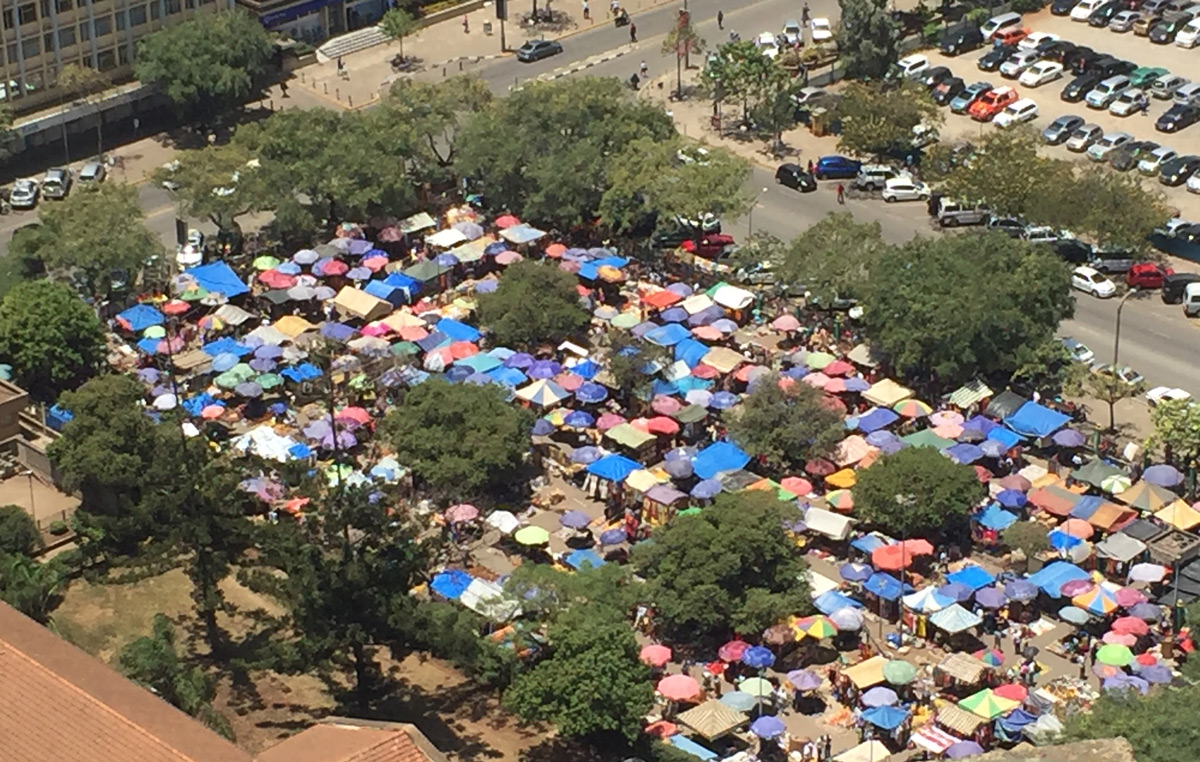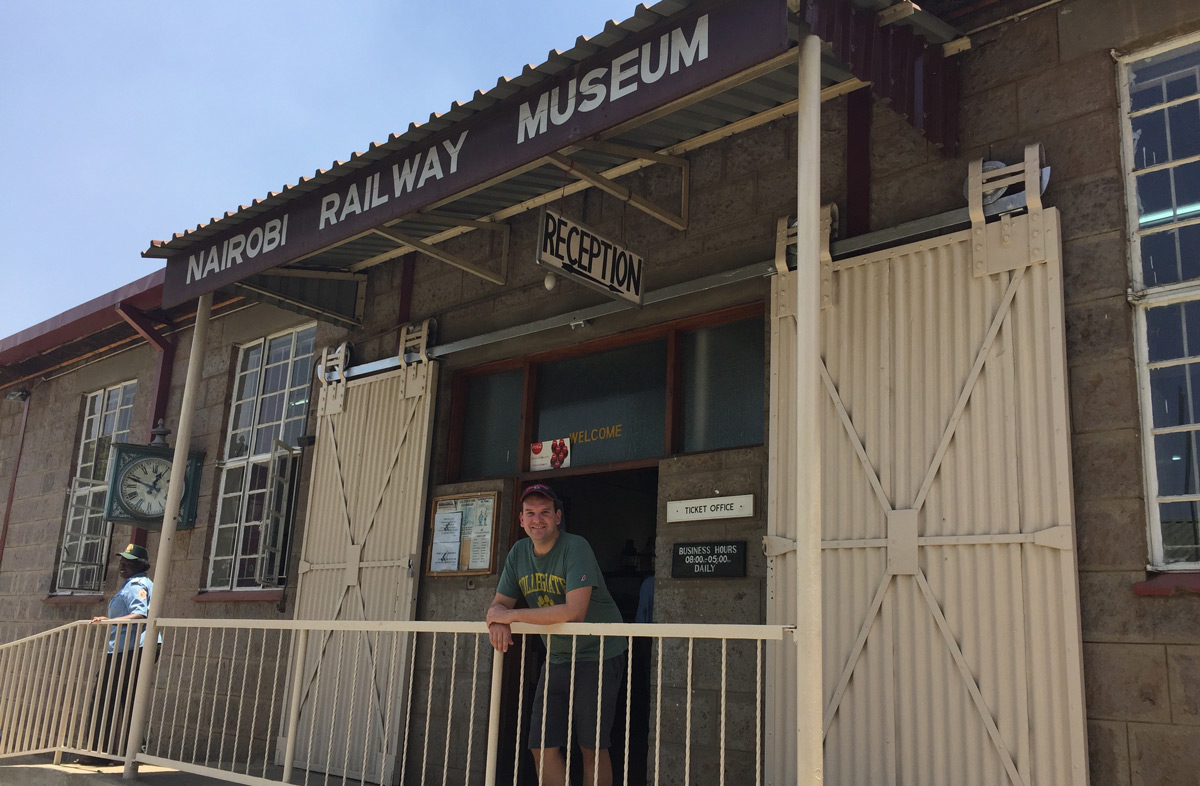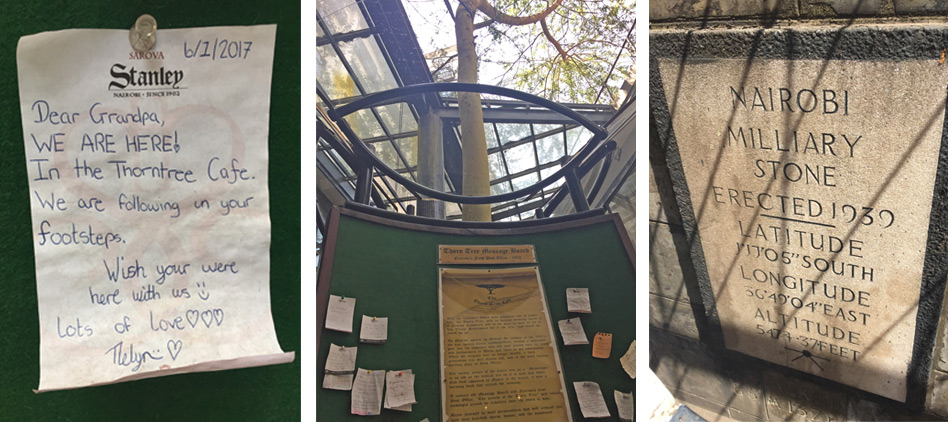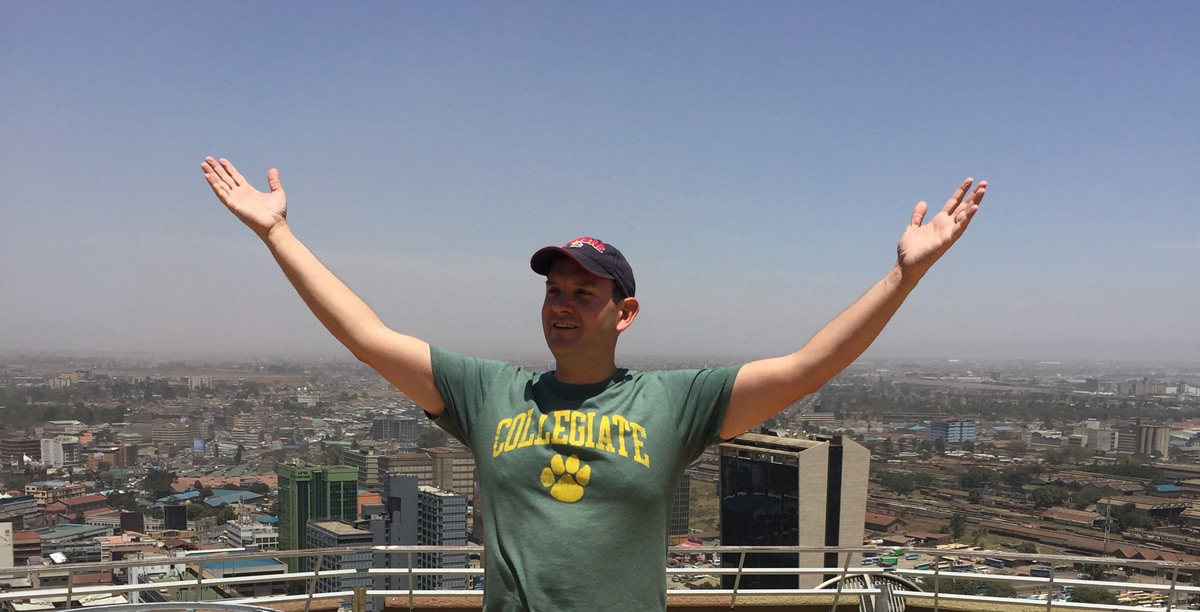The Green City in the Sun
17 October 2017 | East Africa Travel | Michael Boyd

Thika Highway winds its way into the city like a giant river, but it never flows. Built four years ago, there is always traffic on this eight-lane monster. As Dennis and I grind to a halt at Muthaiga, I consider that the road used to be a single-track. I can’t even imagine it, as I look at the huge matatus towering on either side of us, from which bass is emanating so loudly I can feel the vibrations.
Kate is away on business and I don’t know my way around the centre of Nairobi, so in exchange for lunch, Dennis is taking me on an urban adventure. As we brave the chaos Dennis is telling me how to make chapattis – a flatbread that is a Kenyan staple. As we once again come to a standstill, I learn about flour, water, oil and endless rolling out and kneading. I wonder if I will ever make them.

Our first stop is the Nairobi Railway museum, a quaint, quiet little building, the yard of which is littered with train cars and sawn-off railway tracks. We wander amongst the old carcasses that once brought life to this city from the coast. I see the seat in which the young, then-princess, Elizabeth sat on her train-ride to Tree Tops Lodge, not knowing that she would be a queen, sitting in the same seat, upon her return. I see photographs of what Nairobi once was, a sleepy little town, wooden buildings and no skyline. So different to the vibrant, noisy city it is today. I think I prefer it now. Dennis leads me to the most well-known train carriage in the yard: where superintendent Charles Henry Ryall was pulled out of the window by one of the infamous lions of Tsavo – immortalised in John Patterson’s famous diary, The Man-Eaters of Tsavo (then turned into The Ghost and the Darkness by Hollywood). Part of the lion’s tooth is still on display in the museum. I sit where Ryall sat, and get the shivers.

We park at the Kenya International Convention Centre (KICC), built by Kenya’s first president, Jomo Kenyatta, as the tallest building in East Africa. It has long been overtaken, I realise as we ascend the structure, which lies in the shadow of the new Nairobi to the north. That is not to say that the view at the top is not spectacular. The elevator takes us part-way, before we climb two more flights of stairs and onto the open-air helicopter pad. I see Nairobi laid out before me, and far into the distance I look for my old friend, Mount Kenya, but I can’t see it. Dennis tells me on a clear day you can even see Kilimanjaro. I look straight down and watch the movement of the city, as if in slow motion, the matatus seem small from here, the bright-coloured market from above, the burial place of Kenyatta, and Wilson Airport. The air rushes around us, and I sit on the edge of the heli-pad, surrounded by groups of friends and a couple clearly on an important date.
On foot, we make our way onto the city streets, past the statues of Jomo Kenyatta and Dedan Kimathi, one of the heroes of the revolution; the Macmillan Library, where Karen Blixen donated all of her furniture upon leaving Africa, and the Military Stone, the centre point of Kenya, from which all distances are calculated from Nairobi, and into The Stanley Hotel, somewhere I have longed to visit.

The Stanley, built in 1902, is one of Nairobi’s first hotels, a favourite stopover, alongside The Norfolk, for passengers travelling between Mombasa and the interior. Famous guests include Ernest Hemmingway, the explorer Charles Grogan and according to legend, this was where the sly Lord Errol (the murder of whom was the subject of the famous book White Mischief) would bring ladies on his nightly excursions. Much of the building has been preserved and I marvel at the classical Exchange Bar; ceiling fans idly turning, as if they had been doing so for the past 100 years. Dennis has a quiet word with one of the receptionists and we are led to the ballroom, which houses a series of pictures of The Stanley, tracking its history from opening to today. However, the real reason to visit The Stanley is to see the Thorn Tree Café. Now closed in, the café used to sit on the pavement, where I imagine Hemmingway sat and watched passers-by while he envisioned The Green Hills of Africa and his wonderful African short stories, The Short and Happy Life of Francis Macomber and The Snows of Kilimanjaro (it is said you could see the peak of the mountain from The Stanley in those days). In the middle stands a tall fever tree, which sprouts out of a hole in the glass ceiling giving the café its name. The tree became famous because people would leave notes hanging on the thorns, passing messages to friends and family following them – a tradition which continues to this day, except now there are cork boards at the base of the tree, on which many notes hang. I look through some of the notes; some have a touch of sadness, most are silly and some are quite funny (my favourite: ‘I killed Lord Errol’). Dennis and I sit taking it all in over a Coke – Dennis laughs when I tell him I am pretending to be Hemmingway in this moment.

I am aware that it’s lunchtime for Dennis – my treat. I decline his suggestion of Java Coffee House, a chain that sits on every corner, and so it is my turn to become the tour guide. Through friends, I once discovered a little hole-in-the-wall curry house in Westlands called Hashmis, which I was told served the best Chicken Tikka in town. They were right – don’t miss these delicious chicken pieces with masala chips on the side. I am over-joyed when Dennis tells me that he doesn’t know the place. We make our way out of the centre of town and into Hashmis – where, ashamedly, the waiter recognises me and soon we are piling into the delicious and overwhelmingly spicy food.
We stumble back out onto the street and sit quietly in the car. I watch the city roll by outside the window, pleased that I have now also walked those streets. ‘Nairobi used to be called The Green City in the Sun,’ Dennis says. ‘Not so much anymore.’ I think about it. The traffic, the chaos, the noise and the civilisation, that stretches out farther than the eye can see. It’s not that green anymore, I agree. Then I think of the smiles of the people everywhere we went, the history of this place, the streets, the food, the vibrancy and the movement and the energy of it all. It might not be green, but the sun certainly still shines on this lovely city.

Note from the Editor: By now our loyal and patient readers have come to know that Mike’s stories are always hopelessly over budget on the word count. In this delightful account of his love affair with Nairobi he actually lapped the budge twice. And for those of you who know him you will totally understand that he really did believe in that moment he was Ernest Hemmingway. Better than Lord Errol, I say.



COMMENTS (1)
Will Taylor
October 17, 2017great post Mike!
REPLY